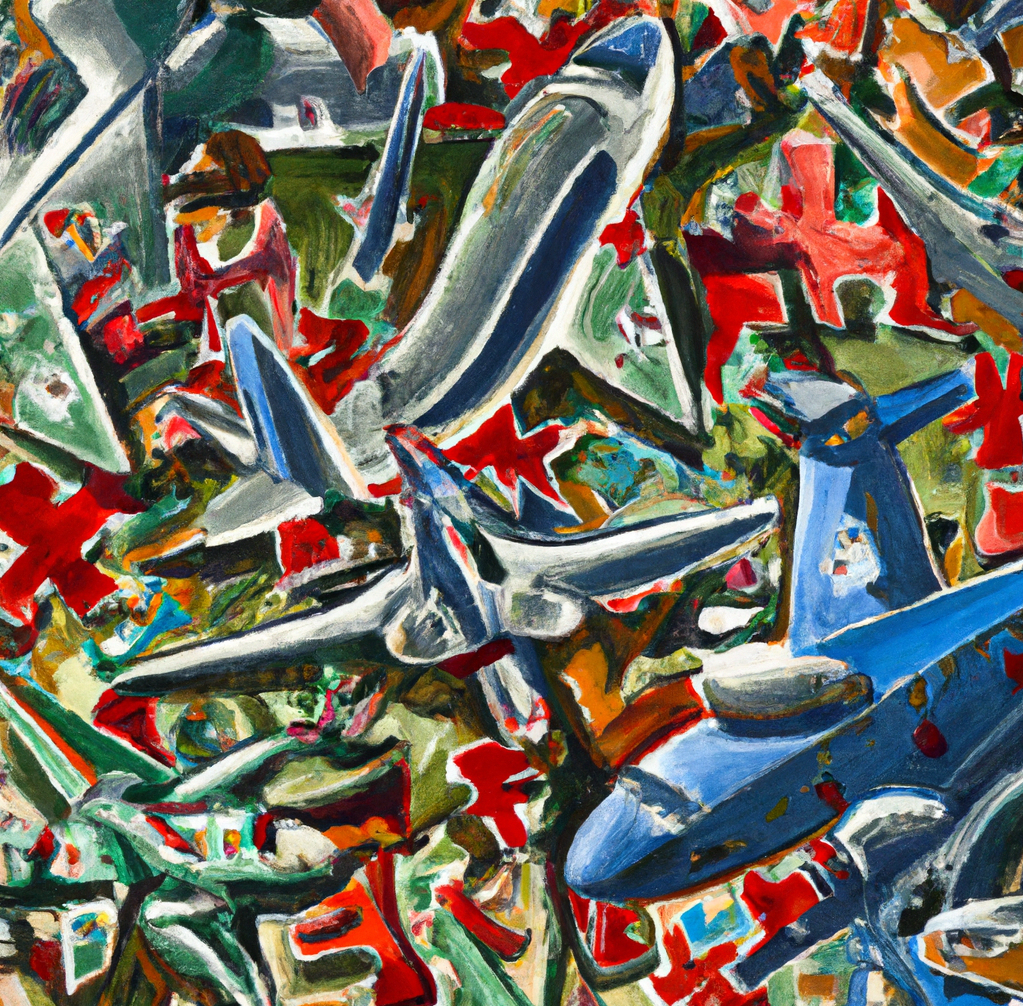Matt Wampler
December 29th 2022
In December 2022, Southwest Airlines experienced a major disruption in its operations due to severe winter weather conditions across the United States. The airline, which is known for its “point-to-point” route model that allows passengers to fly directly from smaller cities and regions without stopping at a central hub, saw more than 2,500 flights, or 62% of its planned flights, canceled on Wednesday alone, according to FlightAware.
What Happened?
One major factor contributing to the widespread cancellations was Southwest’s reliance on the point-to-point model. “The only way to reset is to get the planes and crew back to where they should be,” said industry analyst Mike Arnot. “And the only way to do that is to cancel a huge amount of flights.”
In addition to the challenges posed by the point-to-point model, Southwest also faced tech problems that hindered its ability to track the locations of its crew members and pilots after so many flights were canceled. “Southwest’s system, however, couldn’t keep track of where its crew members and pilots were after so many flights were canceled,” Arnot said.
The disruptions caused by the winter weather and the subsequent cancellations had a ripple effect on Southwest’s operations, leaving planes and crews scattered across the country and causing delays and inconvenience for travelers. “The airline, he said, was ‘focused on safely getting all the pieces back into position to end this rolling struggle,'” according to an article in The New York Times.
In response to the disruptions, Southwest announced that it would continue to operate a reduced schedule by flying approximately one third of its schedule for the next several days. The airline also issued a statement apologizing for the inconvenience caused by the cancellations and offering refunds and rebooking options for affected passengers.
The Point-To-Point System
The point-to-point distribution model involves directly connecting two locations without any service interruptions or servicing the pickup and delivery with the same driver without returning to a central hub. This model is often used by courier businesses, as it allows for faster travel times and is less prone to delays. However, it can be less efficient and more expensive due to the need for more drivers and resources. Automation through transport management software can help to streamline point-to-point distribution operations and increase efficiency.
In the context of Southwest Airlines, the company traditionally used a point-to-point route model, which allowed it to offer direct flights from smaller cities and regions without stopping at a central hub. This model is generally more efficient for travelers who are not flying from major metropolitan areas, as it cuts travel times by eliminating intermediate stops. However, during the recent winter storm that caused widespread flight cancellations, this model proved to be a disadvantage for Southwest.
Because Southwest is the largest airline in many smaller markets, the severe weather led to many canceled flights, leaving planes and crew members out of position in various cities. This created a ripple effect that disrupted the airline’s carefully choreographed network and made it difficult to reset by getting planes and crews back to their proper locations. The point-to-point model also made it harder for Southwest to have a reserve of standby crew members and pilots who could report to work at major airports, as there is not usually excess crew in smaller markets.
In contrast, airlines that use a hub-and-spoke model were able to recover more quickly from the winter storm. The hub-and-spoke model allows for greater flexibility within the transport system through a concentration of flows, and it enables airlines to have a ready pool of crew members and pilots at major hub airports. This makes it easier to regroup after a storm and get planes and crews back to their home airports.
Demand Forecasting
Demand forecasting is the process of predicting future demand for goods or services in order to optimize resources and make informed business decisions. In the airline industry, demand forecasting plays a crucial role in determining how many flights to operate, how many seats to offer, and how to price tickets.
Machine learning is a type of artificial intelligence that enables systems to automatically learn and improve from data without being explicitly programmed. In the context of demand forecasting, machine learning algorithms can analyze vast amounts of data to identify patterns and trends, and make more accurate predictions of future demand.
Southwest Airlines, one of the largest low-cost carriers in the United States, operates a point-to-point route model that connects smaller cities and regions directly without requiring a stop at a central hub. This model is designed to offer more convenient and faster travel for passengers, but it also poses unique challenges for demand forecasting and resource optimization.
During the recent holiday travel season, Southwest experienced a major disruption due to a severe winter storm that affected a large portion of the country. The storm led to the cancellation of thousands of flights and left airplanes and crew members scattered across the country.
According to industry analysts, the point-to-point model used by Southwest made it harder to recover from the storm because it was harder to have a reserve of standby crew members and pilots in smaller markets, and it was more difficult to reset the network by getting planes and crew back to their home airports. The airline’s system also had trouble keeping track of where its crew members and pilots were after so many flights were canceled.
In addition, Southwest’s demand forecasting and resource optimization may have been affected by the complexity of the airline’s network and the limitations of its current forecasting tools. While machine learning algorithms can be very effective in analyzing and predicting demand, they may not be able to fully capture the nuances and dynamic nature of the airline industry.
To address these challenges, Southwest may need to invest in more advanced machine learning algorithms and technologies, as well as improve its demand forecasting processes and systems. In addition, the airline may need to review its route model and consider a more balanced approach that combines the benefits of the point-to-point model with the flexibility and resilience of a hub-and-spoke model.
The key to successful demand forecasting for Southwest will be to adopt a flexible and adaptive approach that can quickly respond to changing conditions and demand patterns. By leveraging the latest technologies and techniques, the company can improve its ability to plan and prepare for fluctuations in demand, which can ultimately help it to better serve its customers and maintain a competitive edge.
Overall, the events of December 2022 serve as a reminder of the complex and interconnected nature of the airline industry, and the challenges that can arise when severe weather or other unforeseen circumstances disrupt operations. It also highlights the importance of having a well-planned and flexible strategy in place to minimize the impact of disruptions and ensure the safety and comfort of passengers.








